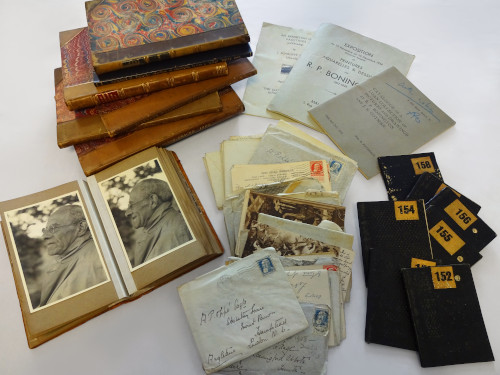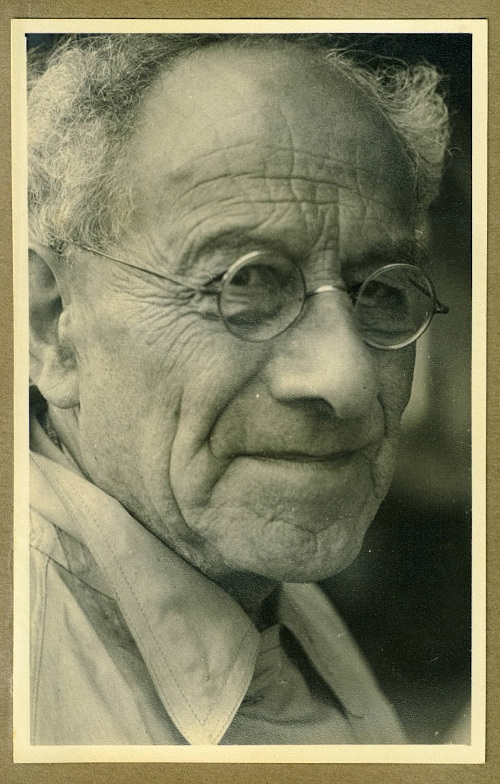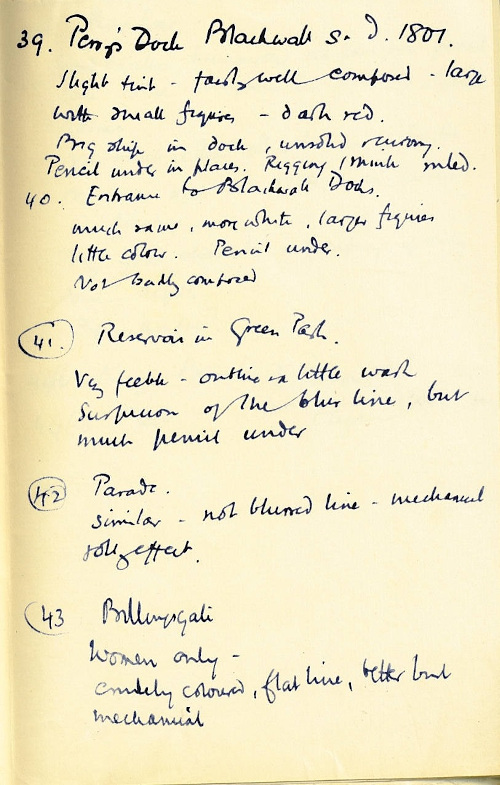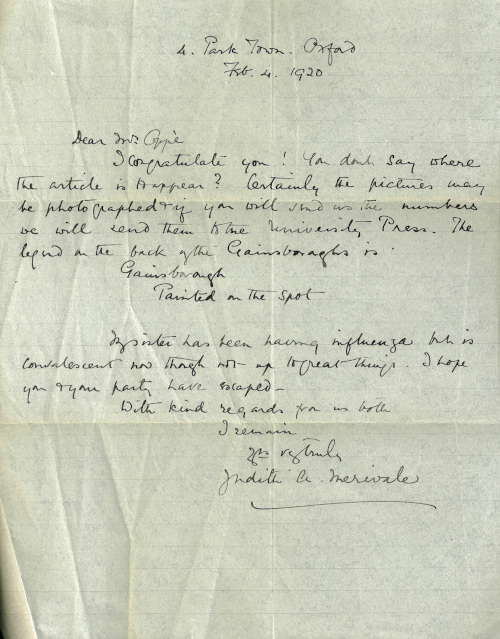Archives Hub feature for November 2019
The Paul Oppé Archive is the most significant acquisition in the Paul Mellon Centre for Studies in British Art’s history. It was allocated to the Centre under the government’s Acceptance in Lieu (AiL) scheme in 2017 and therefore – as part of the AiL process – has been assessed by a panel of experts and identified as having both national importance and pre-eminence in its field. The Centre began collecting Archive material in 1970 and today is the leading UK repository for Art Historian’s papers: the Paul Oppé Archive is an extraordinary resource for study in the field.

Adolf Paul Oppé (1878-1957) was a British art critic, art collector and museum official. Perhaps most importantly, he was an art historian – a pioneer in the field, working at a time when the discipline was just emerging in the UK. He wrote many catalogues on English drawings in the Royal Collection at Windsor, as well as monographs on key 18th Century artists, including Alexander Cozens, William Hogarth and Paul Sandby. Most significantly, he was responsible for establishing the study of British drawings as a scholarly pursuit. Oppé’s collection of over 3,000 drawings (dated 1750-1850) was acquired by Tate in 1996.

The Oppé Archive documents the professional and private life of one of the most important scholars in the field. Alongside material that reflects his work as an art historian, critic, museum official and art collector, it also includes a significant volume of correspondence with, and between, family members.
An Archivist was appointed to catalogue the collection in July 2019 and although the project is not due for completion until April 2020, it is already clear that the material will greatly enhance an understanding of the field. One of the largest sections of the archive comprises Oppé’s research material on individual artists. This material reveals much about how he developed his expertise: his knowledge was gained through constant correspondence with a large network of scholars and collectors, complemented by regular trips to see works in galleries, private residences and auction houses. Accordingly, the collection contains a huge volume of letters. It also includes many exhibition and auction catalogues which Oppé evidently used as notebooks – liberally annotating them with corrections, new findings and his own personal impressions. Similar notes, hastily jotted down whilst visiting a private collection or exhibition, are also found on scraps of paper. These include not only the objective, material qualities of the works such as the physical dimensions or techniques used by the artist, but also details of composition, topography and colour palette. Some include a sketch of the work itself. All of this incredibly detailed information was used to correctly attribute and document works, and fed into the descriptive prose utilised in his many monographs.

The Archive reveals some important stories too. The artist Francis Towne (1739-1816) was largely unknown when Oppé became acquainted with members of the Merivale Family in 1915. The Merivale Family were descendants of John Herman Merivale, a friend and student of Towne. Oppé learned that Towne had left a large body of work to Merivale and that it had remained with the family. Upon visiting them, Oppé uncovered a treasure trove of British art. As a collector, he must have been thrilled to find unknown works of this quality, but first and foremost he was a scholar and his motivation was to bring these works to the attention of the art-historical community. This he did in 1919 with an article published in the Walpole Society journal (Oppé, A.P. (1919) Francis Towne, landscape painter. The Walpole Society, 8. The Walpole Society: Oxford, pp. 95-126. Available in the Paul Mellon Centre Library). We can see all of this story unfold in the archive and the research he carried out – captured in many letters and research notes – still forms the backbone of studies of the works of Towne to this day.


The next stage of the project will look at Oppé’s notebooks. Oppé was a compulsive note-taker writing simultaneously in a pocket diary, a daily diary, and in his “black books” – which contain a strange mixture of personal and professional musings. He also maintained detailed auction notes and inventories of his renowned collection of prints and drawings, many of which are now at Tate. From this extraordinarily complete set of records it is possible to work out more or less precisely when, where and for how much, he bought all the items in his vast collection. The material also illuminates how the drawings market operated in London in the first half of the last century.
Finally, the collection contains a large set of personal papers. The Oppé family were wealthy Jewish immigrants who lived through the most turbulent years of the twentieth century and the material – in particular the extensive correspondence exchanged with various family members – offers an astute perspective of the social history of the period.
The catalogue of this incredible Archive collection is due to be completed in April 2020 and will be launched online shortly afterwards. The Centre is also planning a series of events which will celebrate Oppé and his legacy. These include a small display featuring highlights from the Collection. They also include a workshop and conference exploring the study and display of British drawings. The range and depth of the Oppé Archive offers a perfect starting point for such discussion. The material gives us an insight into a period in which the work of many British artists was discovered and in which art history was an emerging academic discipline. Due to the diligent note-taking and letter writing of Oppé and his contemporaries, the Collection offers an unparalleled resource in the field.
Anthony Day, Paul Oppé Project Archivist
Paul Mellon Centre for Studies in British Art
Related
Paul Oppé Archive, 1876-c 2016
Browse all Paul Mellon Centre collection descriptions available to date on the Archives Hub.
All images copyright Paul Mellon Centre for Studies in British Art and reproduced with the kind permission of the copyright holders.

The student of Towne. Oppé learned that Towne had left a large body of work to Merivale and that it had remained with the family. Upon visiting them, Oppé uncovered a treasure trove of British art.
Thanks